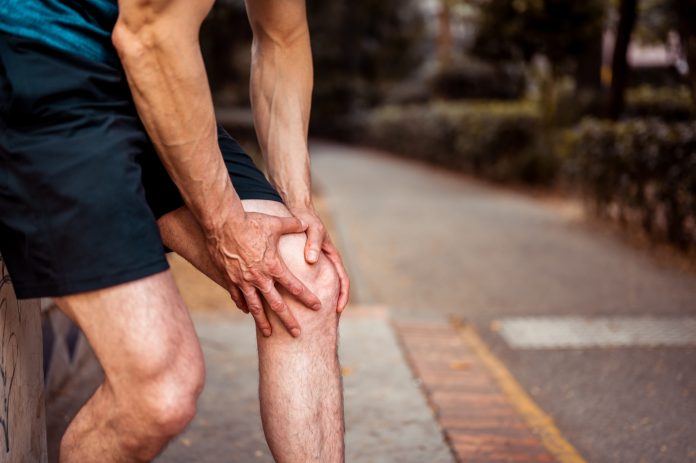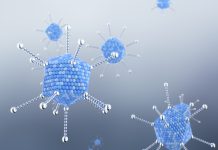Dr Deborah Lee of Dr Fox Online Pharmacy outlines the burden of osteoarthritis, how it can impact daily life, and emerging treatment options
Osteoarthritis (OA) is one of the most common diseases on the planet. 80% of people aged 65 and over have some X-ray evidence of OA – so few of us escape it altogether. But what is currently known about the condition?
What is osteoarthritis (OA)?
Osteoarthritis (OA) is a chronic degenerative disease of the joints. It is the most common form of arthritis, affecting around 500 million people worldwide. Although it is most common in older people, 43% of sufferers are under 65.
OA is not age-related arthritis
In the past, OA was assumed to be age-related and a natural part of ageing. However, evidence now shows that this is not the case – OA is a disease process in its own right. The entire joint is involved – bone, cartilage, tendons, ligaments, fat and the synovial membrane lining the joint.
A degenerative disease process
What triggers the onset of OA is unknown. The disease process involves joint inflammation, thickening of the synovial membrane, enlargement of chondrocytes (cells making cartilage), ossification of cartilage and the production of osteophytes – small outcrops of bone. The collagen matrix (scaffolding) of the bone is damaged, resulting in the thickening of the bone underlying the cartilage and the production of bone cysts.
To stay healthy, articular joints need to maintain a balance between the removal of dead cartilage cells and the production of new ones. However, in OA, excess metalloproteinase enzymes are produced, causing excessive cartilage destruction, and the speed of production of new cartilage cells is inadequate to keep pace with the damage. Levels of proteoglycans (glycoproteins found in the extracellular matrix) are reduced, collagen production is disorganised, and articular cartilage loses elasticity.
The joint surfaces can develop small cracks and micro- fissures, and the joint surface becomes eroded. The joint space decreases and eventually, there is just bone rubbing on bone.
Symptoms and signs of OA
OA can affect any joint, but it most commonly occurs in the hands, hips, knees, neck, and lower back. It may affect only one joint or several joints at the same time. Symptoms include pain, tenderness, stiffness, loss of flexibility, and swelling. Sometimes, the joints look deformed, for example, Heberden’s nodes, which are little pea-shaped outgrowths seen as the distal interphalangeal joints of the fingers.
Interestingly, the severity of symptoms often does not correlate with the extent of the disease. Those with minimal radiographic evidence of OA may have severe symptoms, yet those with severe symptoms may have little to find on medical imaging. Indeed, X-rays of those with OA, at least in the early stages, may be normal.
Living with OA
There is no cure for OA. Patients have to learn to live with the condition, which involves patient education, physiotherapy, medication, and surgery. In 2022, the National Institute for Care and Health Excellence (NICE) published new osteoarthritis guidelines, which are useful tools for clinicians. Patients can help themselves by altering disease-modifying factors such as losing weight and being physically active. New treatments are desperately needed.
Medication for OA
Paracetamol and NSAIDs: Medication to treat OA is disappointing, and there are no treatments to delay or modify the disease process. Paracetamol and non- steroidal anti-inflammatories (NSAIDs) are the drugs most commonly used for pain relief and to reduce inflammation. The long-term gastrointestinal and cardiovascular risks of taking NSAIDS mean they are not designed to be used long-term for any chronic disease.
A 2021 meta-analysis of 192 trials, which included 102,829 participants, concluded that the most effective drug treatments for OA were etoricoxib 60mg /day and diclofenac 150mg/day. Topical diclofenac 70-81 mg/day was also effective and safer than oral preparations. An alternative to NSAIDS is nefopam
Opiates: Opiates are frequently prescribed to patients with mild, moderate and severe OA. Because opiates are addictive and have the potential to cause harm, current guidelines only recommend they be used when other medication and treatment modalities have failed. Compound painkillers such as co-codamol (codeine and paracetamol) and codydramol (codeine and dihydrocodeine) are most commonly used, but also stronger opiates such as tramadol. Opiate patches are sometimes used.
Steroid injections: Steroids have been injected into osteoarthritis joints for decades. A 2023 medical paper presents the arguments for and against. In summary, the authors concluded that it is safe and effective to give up to four steroid injections per year. Each case, however, should be considered on its own merit and undertaken only with the advice of a specialist.
Surgery for OA
Unfortunately, patients are experiencing long waiting lists for surgery. The NHS Constitution states patients should not wait any longer than 18 weeks for surgery such as hip or knee replacements, but 40% of patients wait longer than this, some more than twice this. This is counterproductive because as a person’s mobility worsens, their physical fitness also deteriorates, meaning they are a poorer candidate for surgery.
New medical evidence and options for OA treatment
New evidence is emerging, along with novel ideas for targeted OA treatment, including:
Statin medication: It’s often not recognised that hypercholesterolaemia is a risk factor for OA. Many OA sufferers are also taking statins, which are highly effective in improving the lipid profile and are known to be very safe. However, muscle pain is one of the most common reasons for people to discontinue statins, and rarely, statins can cause rhabdomyolysis – muscle breakdown. Good muscle health is essential for those with OA, so if taking statins is deleterious to their muscle health, this would be a contraindication to their use.
However, fortunately, a 2022 randomised controlled trial (RCT) showed that atorvastatin 60mg/day, despite causing myalgia, did not affect muscle biochemistry (markers creatinine kinase CK and aspartate transaminase AST), muscle size, or strength. The authors concluded that OA sufferers should have statins if they are indicated and that these should not be inappropriately withheld.
Green shell muscle powder (GSM): Postmenopausal women are at increased risk of OA due to oestrogen deficiency and weight gain. In a small 2022 study, 55 obese postmenopausal women with early symptoms of OA were randomised to receive either 3g/day of GSM powder or a placebo for six weeks. In women with knee pain, there was a significant improvement in the GSM group. They postulated this might be because GSM had slowed down collagen degeneration.
GSM powder has also been shown to lower inflammation and reduce pain in those with Rheumatoid Arthritis. This may be because it is rich in omega-3 fatty acids – eicosapentaenoic acid (EPA) and docosahexaenoic acid (DHA) – both of which disrupt the inflammatory pathway, lowering the production of pain-giving prostaglandins.
regenerative therapy that can be undertaken for knee OA using adipose or umbilical cord stem cells. Stem cells are special cells that can become any cell in the body. In a 2023 meta-analysis of 16 studies involving 875 knee OA patients, comparing stem cell therapy to other forms of treatment, the stem cell group had the most significant reduction in pain, which was noted from three months onwards. The NHS is not currently offering stem cell therapy as an OA treatment, although it is available privately.
Gene therapy: OA is now regarded as a complex disease involving numerous proinflammatory immune pathways. Gene therapy provides an option to target a specific region, such as OA of the knee, with a local treatment, making systemic side effects less likely. Genetically modified cells such as synovial fibroblasts, primary chondrocytes, mesenchymal cells and stem cells are transferred to the affected joints. A 2023 systematic review identified 29 targets for gene therapy, including interleukins, growth factors and transcription factors.
Tai Chi: OA is often initiated in a knee joint that is out of alignment. Trauma occurs from repetitively using the joint when it is incorrectly aligned, resulting in inflammation and cartilage destruction. Tai Chi has been shown to improve joint alignment, reducing abnormal forces on the knee. It also strengthens muscles and improves balance.
OA NICE guideline (2022): NICE listed the following treatments as not helpful for OA sufferers and should not be recommended:
- transcutaneous electrical nerve stimulation
- ultrasound therapy
- interferential therapy
- laser therapy
- pulsed short-wave therapy
- neuromuscular electrical stimulation.
Sadly, nothing has been proven to prevent the onset of OA. However, as described above, many new, exciting OA treatments are being investigated. Over the next ten years, we can expect more treatment options to become available.
But there are things we can do to help delay the onset and minimise the symptoms. This advice hasn’t changed. We know that eating a healthy, balanced diet, controlling our body weight so that it stays in the normal BMI range (21-25), and staying physically active are all important.








